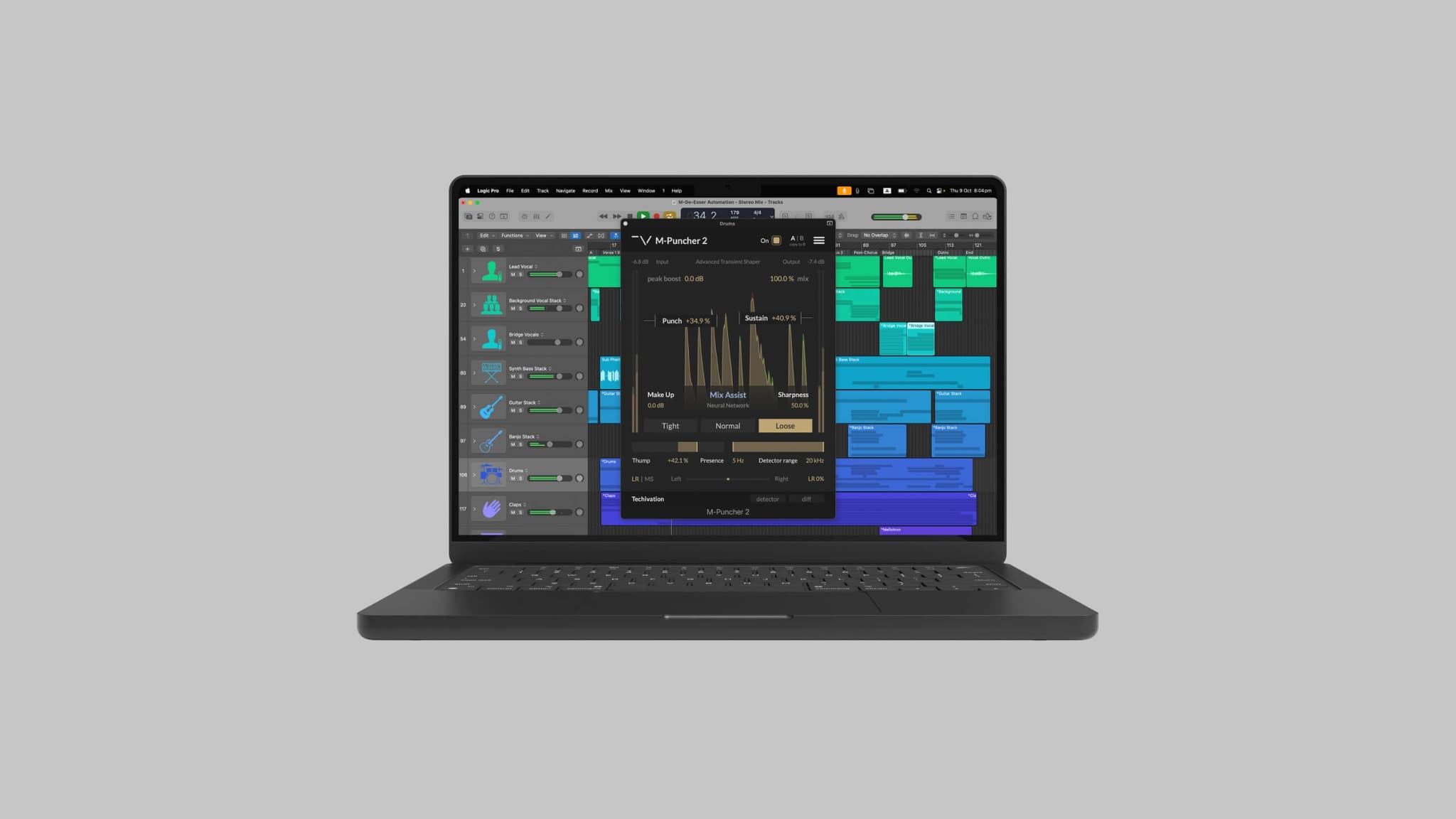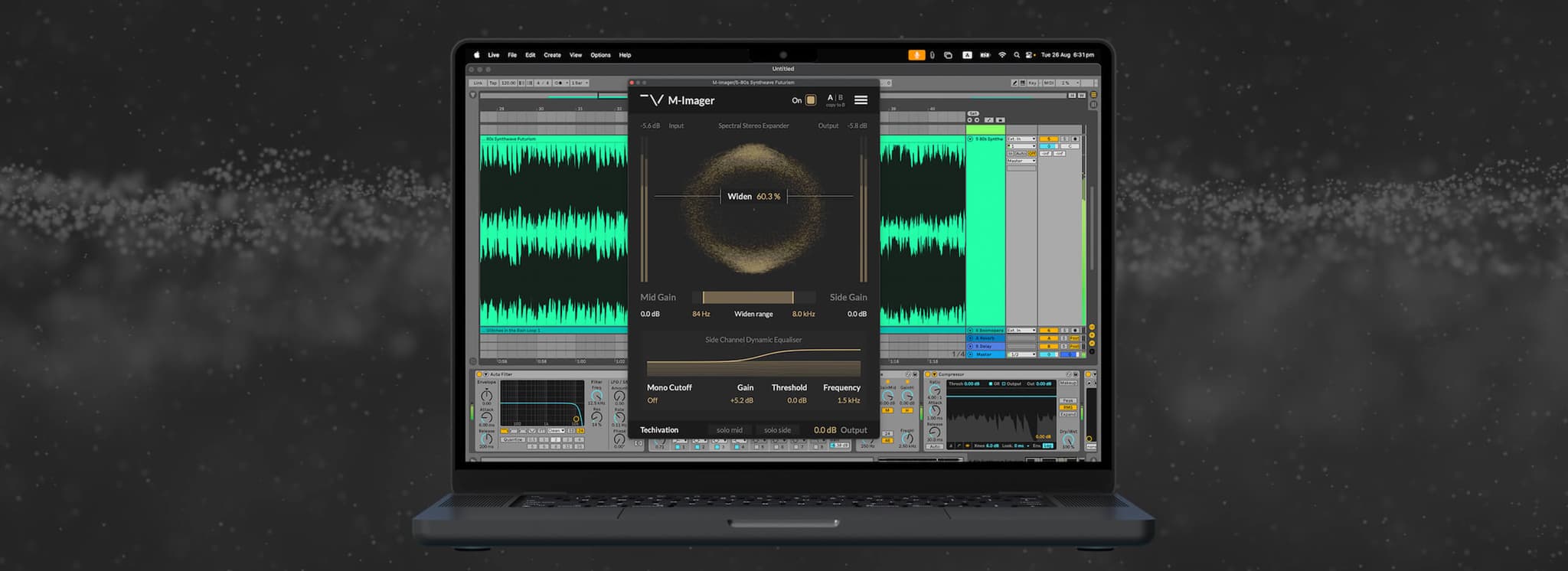4 Creative Ways Of Using SC-HP In the T-Compressor Audio Compressor Plugin
Intro
The T-Compressor audio compressor comes with a lot of useful features including the side-chain highpass filter (sc-hp) which can tell the compressor to ignore a certain range of low frequencies to be compressed. The sc-hp of this audio compressor goes from 20Hz to 350Hz.
In this article, I wanna share 4 creative ways of using this audio compressor’s sc-hp feature.
1. Adding More Punchiness to The Kick Drums
The kick drums usually get their major punch from about 40hz and 100hz frequency range and their knocking sound from about 200Hz to 600Hz. If you set the SC-HP amount in T-Compressor somewhere around 200Hz to 300Hz, (meaning it ignores the frequencies below that range), you will be able to make needed adjustments to boost the knocking sound of the kick.
Set the SC-HP somewhere between 200Hz to 300Hz, go with a slow attack and fast release, and bring down the threshold while the compression amount is set at 40%. As you find the right spot, try to change the compression amount until it sounds punchy enough.
This way, you will let some transients from the upper mid frequencies of the kick drums pass through quickly while keeping the low-end of it unaffected, making the overall kick drum sound punchier.
Making The Bass Sound More Audible on Small Speaker Devices
For most sub-bass or bass tracks, usually, the main frequency range is from 20hz to 300Hz. Now if you want to have the bass instruments’ note sounds more clear and audible on small speaker devices, you need to emphasize more of the upper and mid frequencies of that track.
A lot of people prefer to listen to music on their Earpods or phone speakers that are not able to translate low-end frequency sounds. Thus, this method to make them more audible on those devices will be useful to help them understand what the bass instruments are playing.
Try to apply up to 60-100Hz of SC-HP on the first T-Compressor audio compressor instance, while having both attack and release settings selected as “fast”. Bring down the threshold until you start to hear some aggressive gain reduction in the bass but subtle with low volume. After that add the second compressor to your chain and this time select a different SC-HP, somewhere between 60-120Hz. And do the same thing as the previous instance but with the “slow” release. And lastly, on the third compressor, you may follow the same pattern but with slight changes in the amounts according to your taste.
This way the audio compression mainly applies to the upper mid frequencies that have less volume level compared to the low and low-end frequencies of the bass. Having a fast release speed on the audio compressor here makes the upper mid sounds more aggressive while their volume level is not high compared to the lower frequencies, it makes the bass still sound thick and powerful on big speakers, while sounding with more presence on smaller ones.
Try listening to these sound examples on small speakers, such as your phone, laptop, or tablet.
3. Making your Vocal Sound More Crunchy
Depending on the voice of the singer and the notes, the vocals usually can strat from 90Hz-160Hz going to 20Hz. You can use the SC-HP in T-Compressor to make the vocal sound crunchy and slightly brighter, without applying EQ or even engaging the T-Compressor’s “Crispy” saturation.
The goal here is to lower the dynamic range of the higher frequencies in the vocals, making their sound more to the front.
Load up a T-Compressor, and go with default 50Hz SC-HP while applying subtle compression with “fast” attack and “fast” release speeds to clean and smooth out the overall vocal transients of your vocal track.
Add a second compressor to your serial compression chain, while going down to 350Hz on the SC-HP and keeping the default compression settings. Just bring down the threshold until you feel that the track is getting to sound crunchier. Just go with a subtle amount of compression on that.
After that on a third compressor go with the same 350Hz on the SC-HP, while doing the same thing you’ve done with the second compressor but this time, bring down the compression amount to somewhere between 15% to 25%.
It’s recommended to have the auto-gain off for this purpose so that you can also go creative with gain staging. As the 2nd compressor makes the sound crunchier, increasing the output signal of that will lead to more of that crunchiness effect in the third compressor, while the third compressor would do the same with the final output.
Also, try having a 2X or 4X oversampling enabled for the best sound quality result.
4. Adding a Unique Depth to your Vocal Sound
This tip is very useful when you have a vocal track without many stops between the singing words. It’s especially useful for rap vocals where the artists keep saying word after word without much stops. You may want to apply some reverb to add more excitement and depth to your track, but at the same time, you want to avoid cluttering and having the vocals being pushed to the back of the mix.
Try this method and what happens is that, when the vocal sound reaches a higher volume, the reverb effect gets more subtle, while in the quieter parts of the vocal, the reverb gets more audible. Basically a cool effect you may like on some vocal track of yours. It also adds a texture behind the vocal track, a helpful way if you want to fill up some empty space around your vocals in the mix.
Try adding an AUX track to your vocal, while loading up a reverb plug-in on it. Insert a T-Compressor after the reverb on that AUX track. On the first compressor, go with aggressive audio compression while having the SC-HP at 20Hz, attack: fast, and the release: slow.
Make sure you’re blending the AUX track with the dry vocal so you can hear the reverb effect when playing your vocal track. Now add a second audio compressor in the serial chain. Set the SC-HP to the max (350Hz), and add a lot of input levels to be able to hear the reverb sound properly even though the first compressor is applying a heavy audio compression on that.
Then go with fast attack, slow-release, and some heavy amount of compression but with an output boost, so you make the effect more audible.
Vocal Track By MINDFLIP - Song : Run My Shit
Amin Asbaghipour – Techivation Founder
Share this Article
Featured in this post



![[Video] New Update Released: Techivation M-Exciter](/_next/image?url=https%3A%2F%2Fstatic.techivation.com%2Fuploads%2FM-Exciter%2520New%2520Update.jpg&w=2048&q=75&dpl=dpl_8tuL6D3KD9gUwxuqZU5AMye9cLvU)
